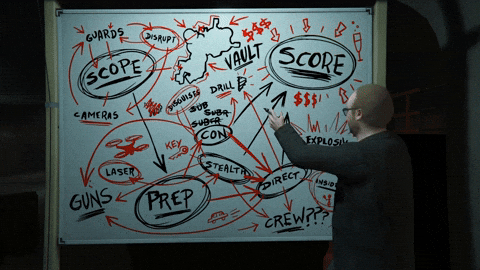Early in my career as a software engineer, release plans were an integral part of my daily work. Yet, interestingly, when I transitioned to product management, I found myself paying less attention to them. Sure, I'd seen them discussed, but usually when someone confused them with roadmaps. We often expect release planning to be driven entirely by engineering rather than product management. Recently though, an reality hit me in the face, one more time, and made me realize that as PMs, we should care about how we deliver features just as much as the value of what we're delivering—because at the end of the day, if your product doesn't reach customers effectively, everything else becomes theoretical.
The Power of a Good Release Plan
You might wonder why a PM should care about release plans when we're already juggling user research, strategy, and backlog prioritization. The answer became crystal clear to me during a recent large-scale refactoring project at eduki. We were simultaneously upgrading our search engine and transitioning from a monolith to microservices—a combination that would make any seasoned engineer raise their eyebrows.
I joined mid-project and quickly discovered a concerning lack of clarity. We had fundamental questions hanging in the air: Could we release any other features during this transition? How would other teams be affected? What potential disruptions might users experience? Even if we had answers, we needed a visual representation to make sense of it all.
Creating an Effective Release Plan
A release plan isn't something a PM creates in isolation. Despite my technical background, I learned that the most effective plans emerge from collaboration with technical leads and the implementing engineers. If you're a solopreneur, you get the unique experience of playing all these roles yourself—but the principle remains the same.
The timing matters too. While you could create a release plan for any feature deployment, they prove most valuable for complex initiatives spanning multiple months or affecting critical systems. Think migrations, major refactoring, or platform upgrades—situations where the sequence of events can make or break your delivery.
What Makes a Solid Release Plan
A comprehensive release plan should include:
Sequenced tasks and activities
Clear ownership and responsibilities
Realistic deadlines
Current status tracking
Communication checkpoints
Verification steps to ensure proper functionality
But it's more than just a checklist. In our refactoring project, I didn't create the technical plan itself—instead, I surfaced the critical questions and concerns that needed addressing to minimize impact on users and revenue. The first version had gaps, particularly around cross-team dependencies, but it helped us identify potential issues before they became problems.
The Planning Paradox
There's a famous quote attributed to Dwight D. Eisenhower: "Plans are worthless, but planning is everything." While this rings true for many aspects of product management, I'd argue that for releases, both the plan and the planning process are crucial. The plan serves as your guide during execution, ensuring sequential steps are followed to avoid costly mistakes.
Beyond Just Another Document
Release plans aren't just another artifact to add to your PM toolbox—they're a critical bridge between what you've built and your customers' experience. I've found that helping engineering teams understand this purpose makes them more likely to engage with and contribute to the planning process.
When done right, a release plan transforms from a simple document into a powerful tool for alignment, clarity, and orchestration. It helps teams move confidently toward delivery, knowing they've considered and prepared for the challenges ahead.
The next time you're preparing for a significant release, consider taking the time to create a proper release plan. Your future self—and your team—will thank you for it.






